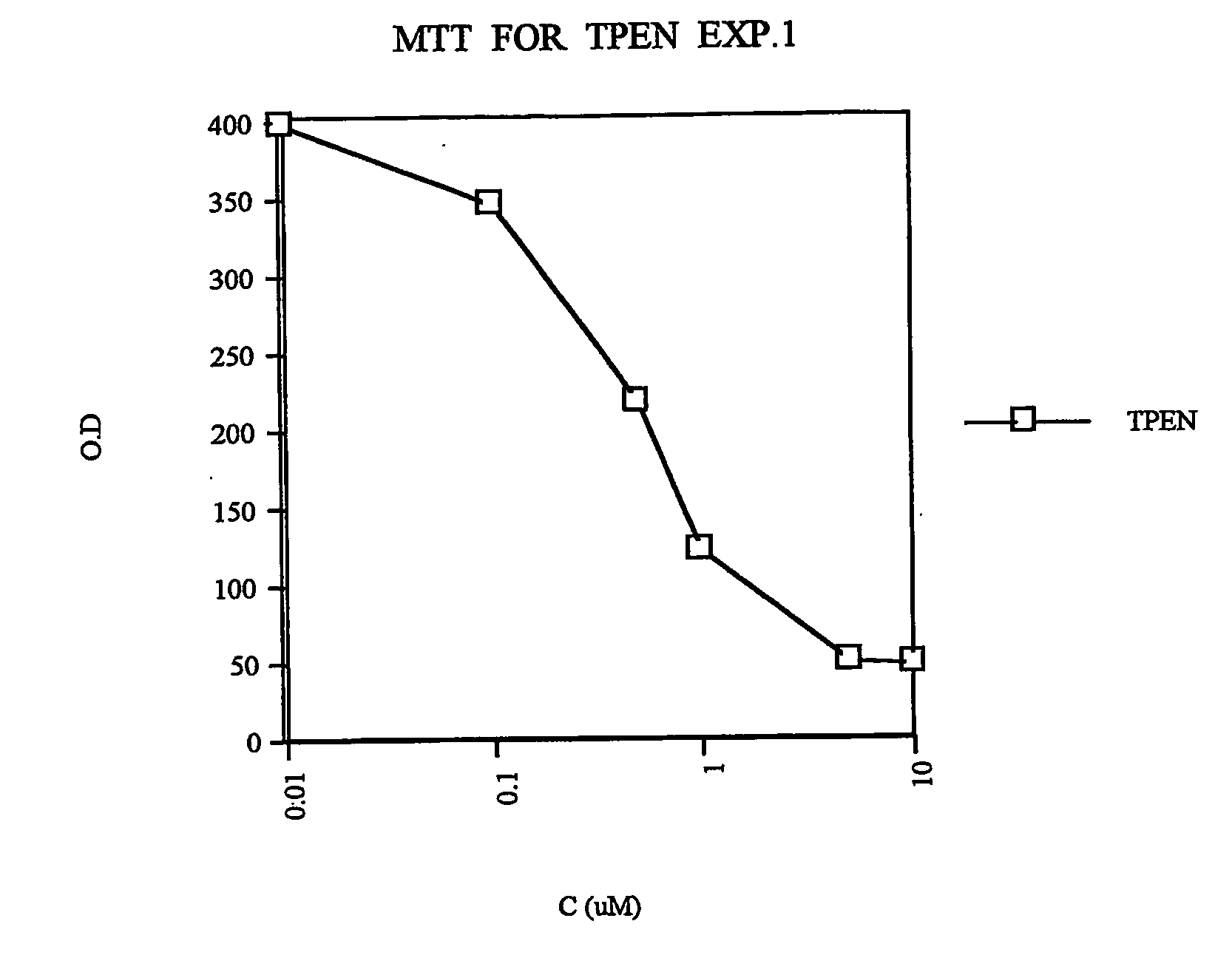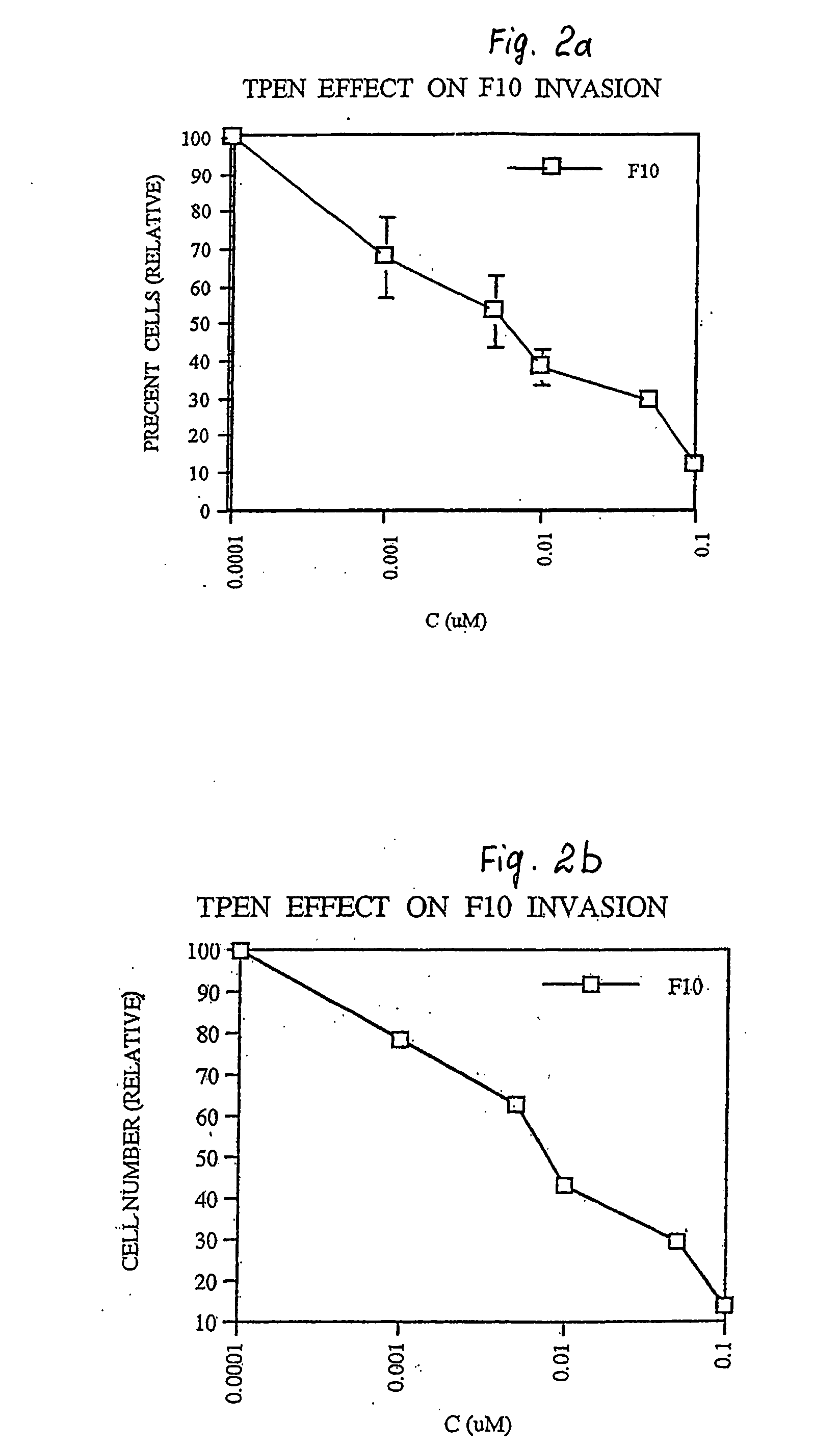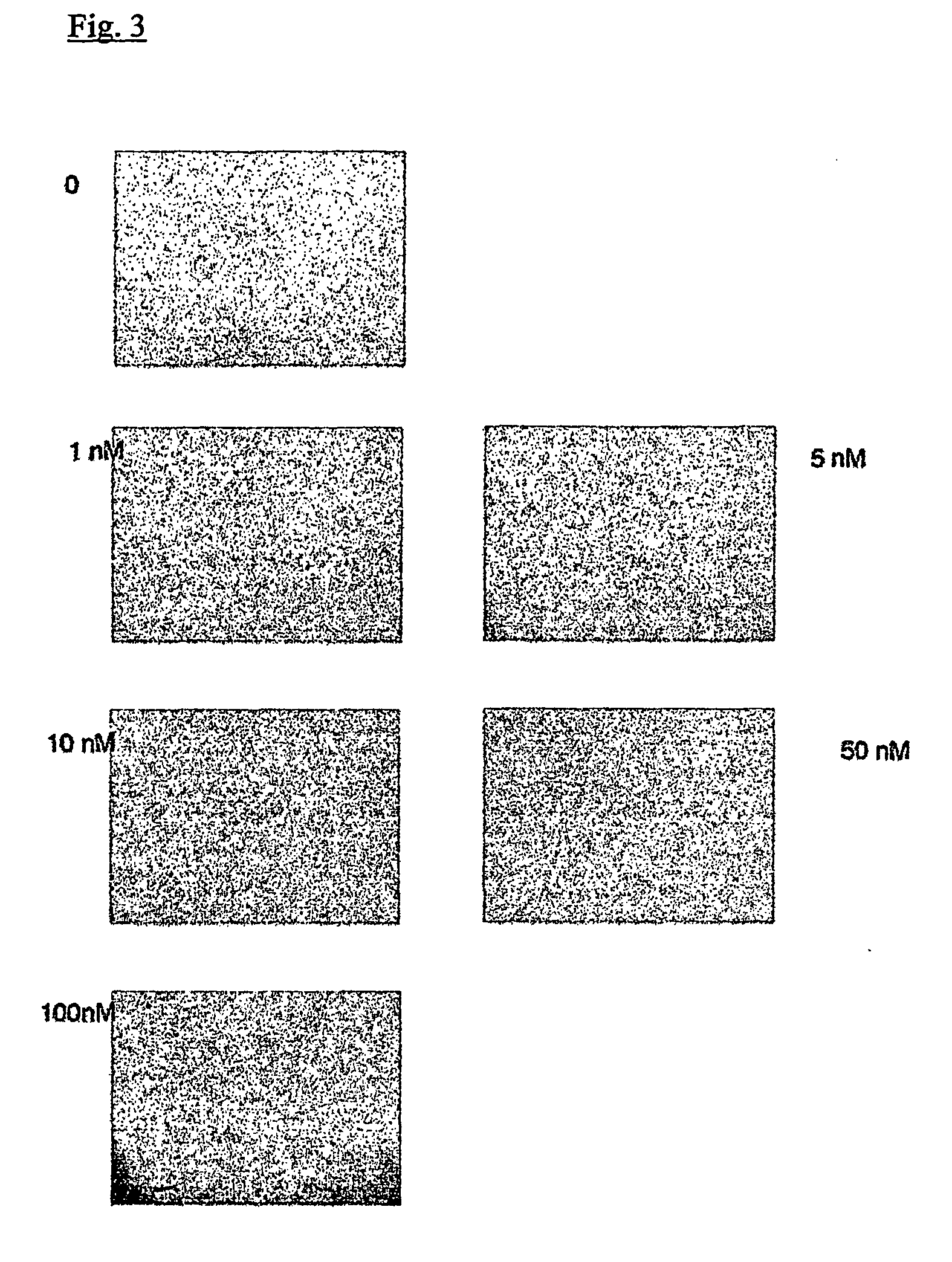Pharmaceutical compositions for inhibiting metal ion dependent enzymatic activity and methods for the use thereof
a technology of enzymatic activity and pharmaceutical compositions, which is applied in the direction of drug compositions, peptides, angiogenin, etc., can solve the problems of inability to successfully clinically apply collagenase inhibitor compounds, inability to induce tumor growth, angiogenesis, tumor growth, etc., to prevent pathological no activity, indirect prevention of mmp protein expression, and enhanced matrix mmp activity
- Summary
- Abstract
- Description
- Claims
- Application Information
AI Technical Summary
Benefits of technology
Problems solved by technology
Method used
Image
Examples
example 1
Analysis of Collagenase IV Activity
[0056] Sub-confluent cell cultures were incubated for 6-24 h in serum-free DMEM and the resulted supernatant were analyzed for collagenolytic activity. The collagenolytic activity was determined on a gelatin impregnated (1 mg / ml, Difco, Detroit, Mich.), SDS-PAGE 8% gel, with minor modifications. Briefly, culture media samples were separated on the substrate-impregnated gels under non reducing conditions, followed by 30 min. incubation in 2.5% Triton X-100 (BDH, England). The gels were then incubated for 16 hours at 37° C. in 50 mM Tris, 0.2M NaCl, 5 mM CaCl2, 0.02% Brij 35 (w / v) at pH 7.6. At the end of the incubation period, the gels were stained with 0.5% Coomassie G 250 (Bio-Rad Richmond Calif.) in methanol / acetic acid / H2O (30:10:60). The intensity of the various bands was determined on a computerized densitometer (Molecular Dynamics type 300A).
example 2
Basement Membrane Invasiveness
[0057] a) Boyden chamber chemoinvasion assays were performed. Matrigel (25 mg) was dried on a polycarbonated filter (PVP free, Nucleopore). Fibroblast conditioned medium (obtained from confluent NIH-3T3 cells cultured in serum free DMEM) was used as the chemoattractant. Cells were harvested by brief exposure to 1 mM EDTA, washed with DMEM containing 0.1% bovine serum albumin and added to the Boyden chamber containing 200,000 cells. The chambers were incubated in a humidified incubator at 37° C. in 5% CO2 / 95% air atmosphere for 6 h. The cells, which traversed the Matrigel layer and attached to the lower surface of the filter, were stained with Diff Quick (American Scientific Products) and counted.
example 3
[0058] Chemotaxis evaluation was performed in a similar way to basement membrane invasion, with the exception that the filters were coated with 5 mg collagen IV instead of Matrigel. This amount of collagen did not form a barrier to the migrating cells but rather functioned as an attachment substratum.
PUM
| Property | Measurement | Unit |
|---|---|---|
| concentrations | aaaaa | aaaaa |
| concentrations | aaaaa | aaaaa |
| incubation time | aaaaa | aaaaa |
Abstract
Description
Claims
Application Information
 Login to View More
Login to View More - R&D
- Intellectual Property
- Life Sciences
- Materials
- Tech Scout
- Unparalleled Data Quality
- Higher Quality Content
- 60% Fewer Hallucinations
Browse by: Latest US Patents, China's latest patents, Technical Efficacy Thesaurus, Application Domain, Technology Topic, Popular Technical Reports.
© 2025 PatSnap. All rights reserved.Legal|Privacy policy|Modern Slavery Act Transparency Statement|Sitemap|About US| Contact US: help@patsnap.com



